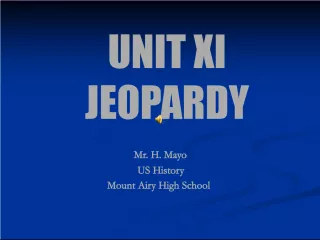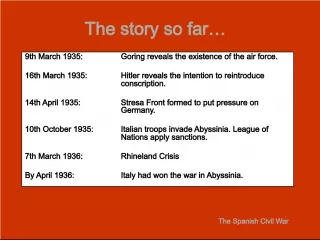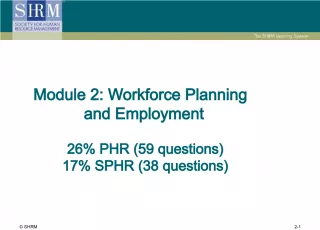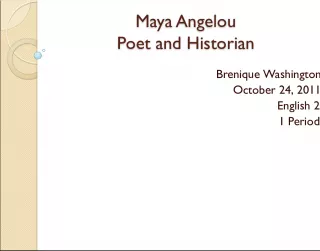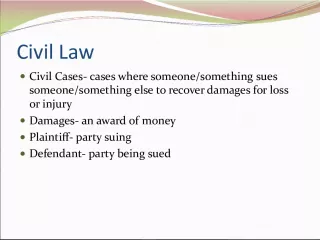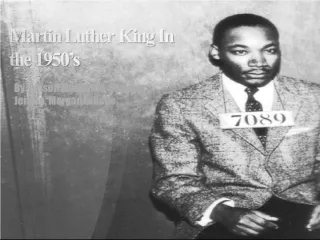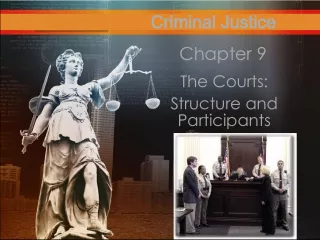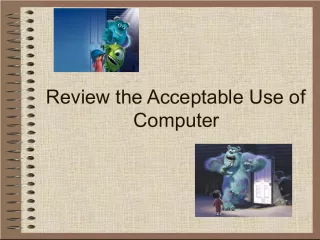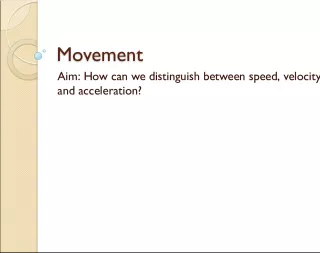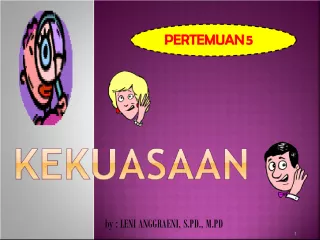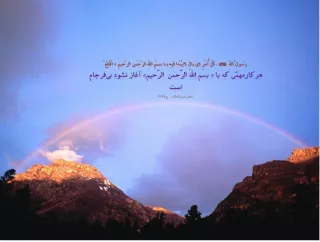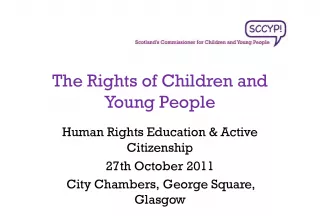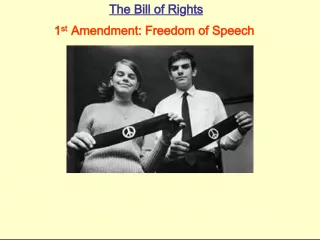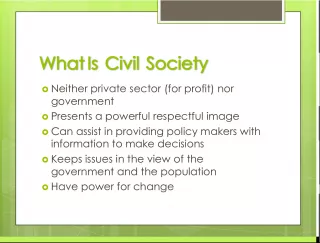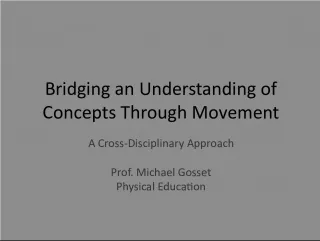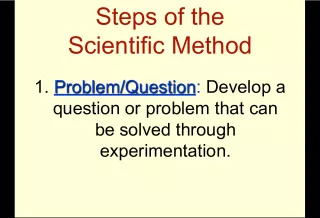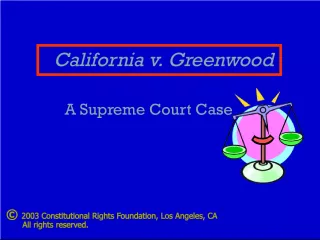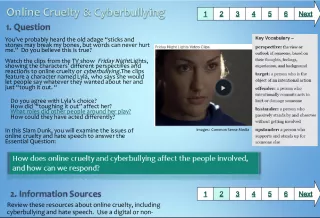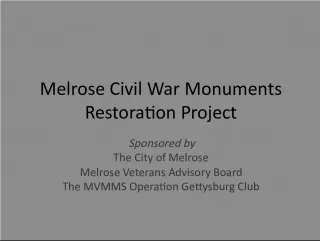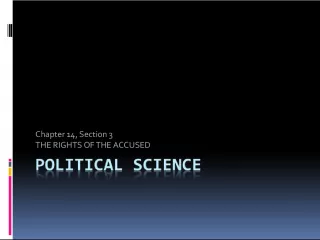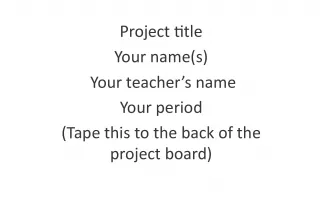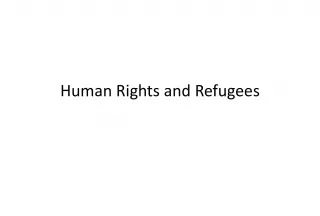Three Events that started the Civil Rights Movement and Understanding Question-Answer Relationships
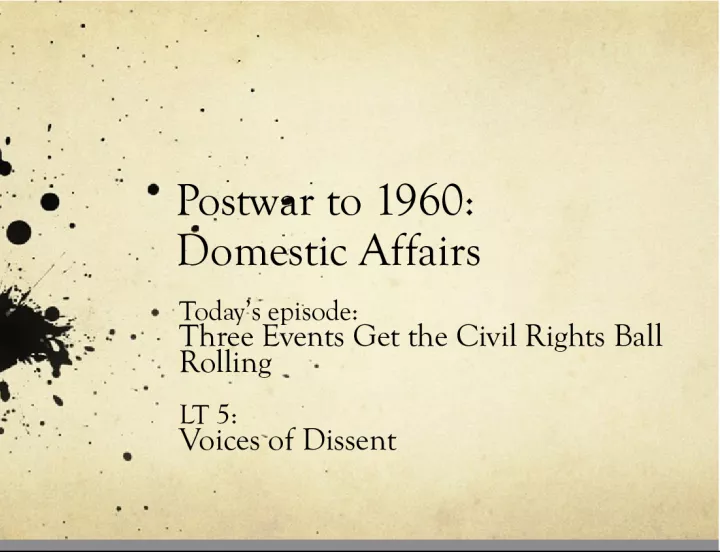

In this episode of Domestic Affairs Today, we explore the three events that contributed to the start of the Civil Rights Movement. We also delve into the importance of
- Uploaded on | 3 Views
-
 fidelvillareal
fidelvillareal
About Three Events that started the Civil Rights Movement and Understanding Question-Answer Relationships
PowerPoint presentation about 'Three Events that started the Civil Rights Movement and Understanding Question-Answer Relationships'. This presentation describes the topic on In this episode of Domestic Affairs Today, we explore the three events that contributed to the start of the Civil Rights Movement. We also delve into the importance of. The key topics included in this slideshow are . Download this presentation absolutely free.
Presentation Transcript
Slide1Postwar to 1960:Domestic Affairs Today’s episode: Three Events Get the Civil Rights Ball Rolling LT 5: Voices of Dissent
Slide2Question Answer RelationshipStrategy (QAR) A way to help people realize that the answers they seek are related to the type of question being asked. Encourages people to base the way they search for answers on the type of question being asked. Emphasizes understanding where the answer will come from.
Slide3Question-Answer Relationships (QAR)Four types of questions In the text 1. Right there 2. Pulling it together 3.Author and Me In your mind 4. On My Own
Slide4Four types of questions In the text In your mind ∙ Right there ∙ Author and me ∙ On my own Answer’s in one spot Answer requires text and Can answer w/out the background info text, but text will ∙ Pulling it together impact answer Answer’s in multiple spots
Slide5RIGHT THERE-Reread -Scan -Look for key words PULLING IT TOGETHER - Skim or reread -Look for important info -Summarize AUTHOR AND ME -Reread -Think about what you already know and what the author says ON MY OWN -Think about what you already know -Think about what you’ve read before -Make connections What should you do for each type of question?
Slide6DiscussWould you face harassment and violence to go to a much better school? Explain your answer.
Slide7For discussion…How much interaction is there between races in Quakertown? In Quakertown High School? Fact: in Pennsylvania, segregation in public schools was declared illegal in 1881 When was it declared illegal on a national level?
Slide8Race RefresherJim Crow laws – state laws that legalized segregation in the South Segregation – separate but equal public facilities (things that serve a particular function, e.g. schools, bathrooms, etc.)
Slide9Why the civil rights movementstarts growing after WWII 1. Good postwar economy and new wealth means: economic progress for blacks doesn’t have to mean less $ for whites, so… 2. Large # of blacks move north leading them to: gain political power (why?) to push politicians for desegregation in the South 3. America’s emphasis on importance of freedom during Cold War: goes against segregation • Racism could lead Africa and Asia to support Soviets instead, so…
Slide10Three events will start the civilrights movement…
Slide11Guided reading activity
Slide12TV also propels the civil rightsmovement [In the 1950s and 1960s] "the race problem entered their living rooms. Tens of millions nightly watched the drama of the Negro Revolution. The growing majority of Americans favoring racial equality and justice had those sentiments reinforced by TV shots of snarling dogs attacking black demonstrators, rowdy white hoods molesting young blacks patiently waiting to be served at a lunch counter, and hate- filled white faces in a frenzy because of the [nerve] of little black children entering a previously all-white school” Howard Sitkoff, "The Preconditions for Racial Change"
Slide13Postwar to 1960:Domestic Affairs Today’s episode: Civil Rights Begins LT 5: Voices of Dissent
Slide14Warm-Up: Discuss UsingNotes 1. Define Jim Crow laws and segregation 2. Explain how each of the following help to get the civil rights movement going: 1. The postwar economy and increasing wealth 2. Movement of blacks to the north 3. The Cold War
Slide15Continue theguided reading handout
Slide16RIGHT THERE-Reread -Scan -Look for key words PULLING IT TOGETHER - Skim or reread -Look for important info -Summarize AUTHOR AND ME -Reread -Think about what you already know and what the author says ON MY OWN -Think about what you already know -Think about what you’ve read before -Make connections What should you do for each type of question?
Slide17After you finish the handoutUsing pp. 611-615 of your textbook, create newspaper headlines summarizing what’s happening with each of the following groups after WWII: Hispanics Asians American Indians The rural poor Urban communities
Slide18Warm-UpUsing your notes, alternate explaining the three reasons the civil rights movement starts growing after WWII with the person next to you. Each person should explain each reason once Person 1 explains: #1 #3 #2 Person 2 explains: #2 #1 #3 If one person doesn’t know how to explain a reason, then the partner should help
Slide19Why the civil rights movementstarts growing after WWII 1. Good postwar economy and new wealth means economic progress for blacks doesn’t have to mean less $ for whites, so: 2. Large # of blacks move north leading them to gain political power to push politicians for desegregation in the South 3. America’s emphasis on importance of freedom during Cold War goes against segregation • Racism could lead Africa and Asia to support Soviets instead, so:
Slide20Postwar to 1960:Domestic Affairs Today’s episode: Civil Rights Begins LT 5: Voices of Dissent
Slide21Pleasantville paper duetomorrow Typed, double-spaced
Slide22Warm-Up: DiscussWITHOUT Your Notes Define Jim Crow laws and segregation Explain how each of the following helps the civil rights movement Postwar economy Blacks moving north Cold War
Slide23Big Ideas for the Civil RightsUnit When faced with seemingly irreconcilable conflict within a group, should parties choose to separate or commit to working towards peaceful coexistence? Reconcile: to settle Irreconcilable: cannot be settled (divorce citing irreconcilable differences) What is a more effective way of achieving social change in society: nonviolent action or showing willingness to use violence?
Slide25Brown v. Board of Education1. Pulling it together: When was the ruling of Brown v. Board of Education given and what did it do? May 17, 1954; declared racial segregation illegal in public schools 2. Author and me: Use the context to explain what the authors mean when they say African Americans were skeptical about Brown because for them there has been a “difference between the law in books and the law in action”? Af-Ams doubted Brown would have impact because laws aren’t always followed
Slide26Showdown in Little Rock3. Pulling it together: How did the Brown decision affect school desegregation in the South? Desegregation moved slowly. By end of 1956- 57 school year, vast [great] majority of southern school systems remain segregated
Slide27Percent of black students attendingintegrated (desegregated) schools in the South
Slide28Showdown in Little Rock4. Pulling it together: Who are the Little Rock Nine ? The nine African American students admitted to all-white Central High in Little Rock, Arkansas, September 1957
Slide29Little Rock Nine arelike the Jackie Robinson of Southern public schools
Slide30Showdown in Little Rock5. Pulling-it-together: What events led up to the Little Rock Nine being able to enter their school? Governor Faubus: orders Arkansas National Guard to keep them out to protect the school. Faubus removes Nat’l Guard under court order leading to white mob riot. Pres. Eisenhower: sends 1,000 federal troops to protect the 9 How long were the students prevented from entering the school? 3 weeks 6. Right there: After the first school year, what did Governor Faubus do to resist desegregation? Closed all Little Rock public schools, creates all-white private school system
Slide34Little Rock Nine(3:42)
Slide35president eisenhower upholds the brown decision – Why?“At a time when we face grave situations abroad because of the hatred that communism bears toward a system of government based on human rights, it would be difficult to exaggerate the harm that is being done to the prestige and influence, and indeed to the safety, of our nation and the world. Our enemies are gloating over this incident and using it everywhere to misrepresent our whole nation. We are portrayed as a violator of those standards of conduct which the peoples of the world united to proclaim in the Charter of the United Nations. There they affirmed ‘faith in fundamental human rights’ and ‘in the dignity and worth of the human person’ and they did so ‘without distinction as to race, sex, language or religion.’ [If resistance to the Brown decision ends]…Thus will be restored the image of America and of all its parts as one nation, indivisible, with liberty and justice for all.”
Slide36Little Rock 9 Today
Slide37my public school education was my primary exposure to adesegregated community. in school we all hung out together: blacks, whites, hispanic, asian. of course, segregation within the school still exists. you hang out with people from your neighborhood primarily. and neighborhoods of little rock are segregated. but public school was that one opportunity for many (like myself) to spend time with kids from another part of town. i think the most important lesson to be drawn from today's situation is that public school is one of the few ways in which the many social classes of little rock interact. not only do whites, blacks, and others intermingle in school, but the very act of going to this part of little rock is an act of crossing invisible borders for many.
Slide38The Montgomery Bus Boycottboycott : stop buying or using something as a way of forcing change Describe a situation where YOU might choose to boycott something and explain why to the person closest to you
Slide39The Montgomery Bus Boycott7. Right there: In addition to fighting segregation in schools, what did the NAACP seek to do? The practice of forcing African American citizens to ride in back of city buses 8. Right there: How did Rosa Parks give the NAACP its opportunity on December 1, 1955? Refused to give up bus seat to white passenger and was arrested
Slide40The Montgomery Bus Boycott
Slide41The Montgomery Bus Boycott9. Pulling it together: What happened in response to Parks’s arrest and conviction? Many of the 50,000 Af-Ams boycotted the bus system in protest 10.Pulling it together: Who was the spokesperson of the boycott and how did he urge the black community to respond to the white protesters trying to break the boycott? Martin Luther King, Jr.; non-violence
Slide43The Montgomery Bus Boycott11. Pulling-it-together: How and when did the boycott come to an end? Supreme Court declared Montgomery and Alabama segregation laws unconstitutional in November 1956. 12. Author and me: What did the Montgomery victory do? What impact do you think this might have on the civil rights movement? Marked a blow to racial discrimination and the fear of standing up to people in positions of power 13. Author and me: Why is the Civil Rights Act of 1957 important? Made it a federal crime to prevent qualified persons from voting
Slide44The Montgomery Bus Boycott(4:58)
Slide45Closure1. Rank these three events in order of importance to the civil rights movement. 1. Brown v. Board of Education (1954) 2. Little Rock Nine (1957) 3. Montgomery Bus Boycott (1955-56) 2. In groups of four, discuss and agree on a ranking for the entire group.
Slide46Three events will start the civilrights movement…
Slide47Postwar to 1960:Domestic Affairs Today’s episode: Three Events to Start the Movement LT 5: Voices of Dissent
Slide48SMART Board warm-up
Slide49The Montgomery Bus Boycott(4:58)
Slide50Closure1. Rank these events in order of importance to the civil rights movement. 2. In groups of four, discuss and agree on a ranking for the entire group.
Slide51Three events will start the civilrights movement…

